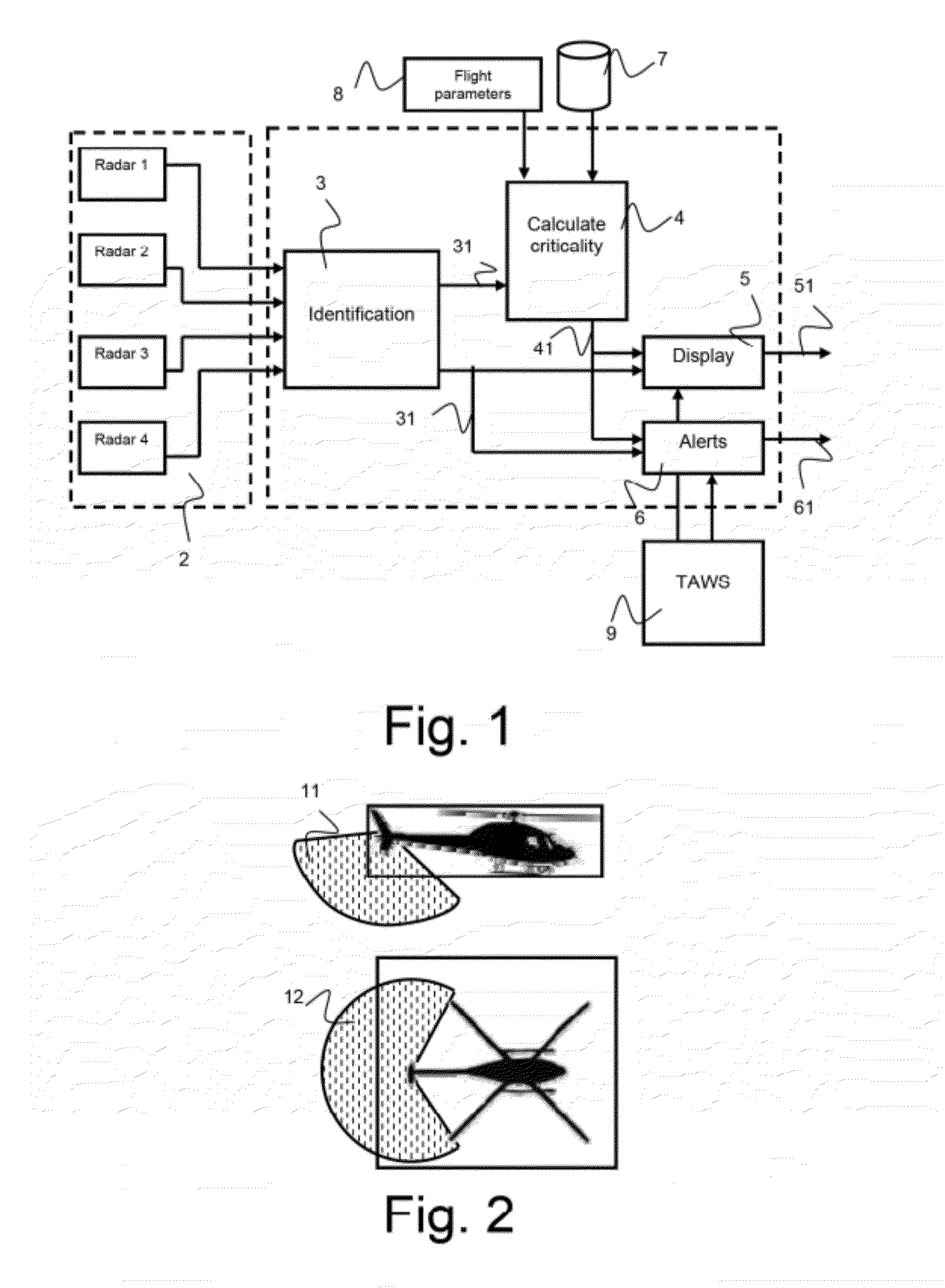Device and method for monitoring the obstructions in the close environment of an aircraft
a technology for aircraft and close environment, applied in the field of aircraft navigation aids, can solve the problems of not being able to detect mobile obstacles such as terrestrial vehicles or other aircraft, reducing sensitivity so much, and reducing the surprise effect, so as to reduce the stress of the crew and reduce the surprise effect.
- Summary
- Abstract
- Description
- Claims
- Application Information
AI Technical Summary
Benefits of technology
Problems solved by technology
Method used
Image
Examples
Embodiment Construction
[0021]The aim of the present invention is to make the systems cited hereinbelow collaborate, so as to present to the crew the obstacles and the terrain zones that are potentially dangerous for the craft in general. The monitoring device is arranged in such a way that it recovers the data originating from an active system for detecting obstacles and the relief based on short-range radar technology, of WTAS type for example, the data of a system of TAWS type making it possible to raise ad-hoc alerts should the craft approach dangerously near to a relief zone and / or obstacles, and that it transmits, to a display device in the cockpit, the information formulated by the system so as to present the said information to the crew.
[0022]The invention also relates to the method for monitoring obstructions for an aircraft, characterized in that detection means measure parameters for locating and identifying obstacles in the close environment of the aircraft, in that identification means calcula...
PUM
 Login to View More
Login to View More Abstract
Description
Claims
Application Information
 Login to View More
Login to View More - R&D
- Intellectual Property
- Life Sciences
- Materials
- Tech Scout
- Unparalleled Data Quality
- Higher Quality Content
- 60% Fewer Hallucinations
Browse by: Latest US Patents, China's latest patents, Technical Efficacy Thesaurus, Application Domain, Technology Topic, Popular Technical Reports.
© 2025 PatSnap. All rights reserved.Legal|Privacy policy|Modern Slavery Act Transparency Statement|Sitemap|About US| Contact US: help@patsnap.com



